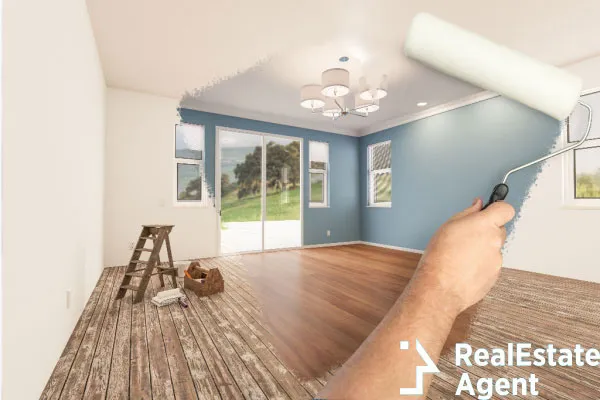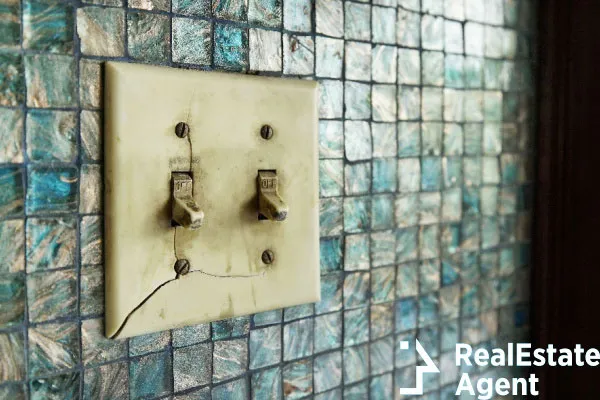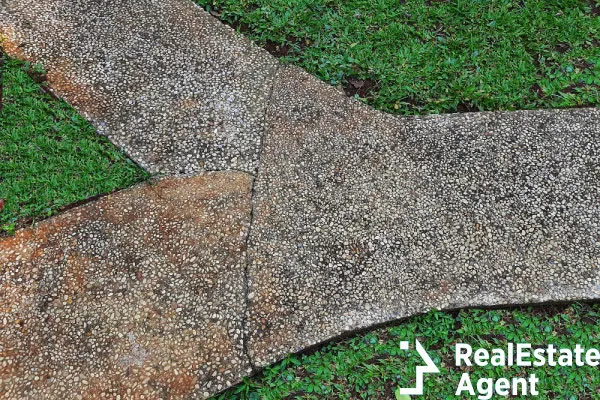
Living in a society based on consumerism, we are used to everything we buy being in perfect shape. We send back articles of clothing that don’t fit instead of altering them at a sewist; We return an appliance if it has a visible scratch; We go back to the store to return a product that doesn’t fit our expectations even if we purchased it ourselves from the store. While these things are mended in some cases before they are returned to the market space, most of them end up in landfills, as the 2021 Amazon scandal showcased. The media even promotes a concept of positive transformation across industries. From fashion makeovers to HGTV house flipping shows, these positive transformations lead us to think that everything that is purchased must look perfect.
While, in many cases, these expectations are understandable, it’s not always the best decision from a financial perspective. For instance, take a dress bought online that needs to be tighter around the waist. Altering it or getting it altered would be a more conscious decision given everything that would entail returning it and then ordering the replacement (shipping, gas, time). But a full renovation before the sale doesn’t guarantee a profitable return on investment when it comes to property. Some fixes can help you sell your property and recover the investment, but others can be too costly and have a low return on investment ratio.
Many homeowners think that a full makeover will make their cash in on a more significant profit, and saying that you shouldn’t fix everything may sound counterintuitive. However, it’s good to know what to spend your money on and what not to.
What NOT to Fix When Selling a House

If you have had some experience in the real estate market or are working with a real estate agent, figuring out what not to fix when selling a house may be easy. Still, seeing as not everyone has all the information necessary to make the best decision for their financial situation, we came up with a list for you.
Homes aren’t like a new iPhone. An already owned home will show signs of wear and tear and won’t be the new and shiny version you purchased all those years ago. Anyone who expects that when they purchase an already owned home is kidding themselves. While some investments before the sale can increase the property's value, some fixes shouldn’t burden the seller. There’s also the option to sell a house as-is with the risk of losing some money, in which case the buyer will be aware of the fact that they are buying a fixer-upper that will require some work, either before they move in or later on.
It’s understandable when it comes to homeowners selling their homes that they want the property to be in the best shape. While there are renovations that will help them sell a property faster and at a higher price, the home may not be in perfect shape as home renovations aren’t cheap, especially in this day and age. Still, every seller needs to understand what should and shouldn’t be fixed. So here’s a list of what not to fix when selling a house. Focus on fixing things like leaks, electrical connections, roofing, and foundation, as those can be real issues for the safety of a property, and overlook the following updates or upgrades as they don’t need your investment.
Paint

Many people jump at the idea of painting their homes' interior and/or exterior before putting them up for sale. This is one of the most useless investments, as the new people purchasing your property will more than likely have their own interior decoration ideas. It will be just painting that you spend money on, which they will probably also spend when they decide on the color pallet that fits their lifestyle the most.
Furthermore, if you decide to paint over, there is a high risk that your color choices will make the property less appealing to potential buyers. Just consider that as you had your own ideas regarding interior design when you purchased the home. For instance, maybe you like deep purple bathroom paint or a gushing red in the living room. Other people may not find those colors as fitting for those rooms, and spending money to paint over it or put another pop of color in a room might also not fit with prospective buyers. So, for your budget and against the use of unnecessary resources, just don’t do it. Let them figure out what color pallet they want to choose.
If, however, you flip a home, the situation changes. Property investors do paint the house they flip, but when they do, they usually stick to a neutral color pallet. If you aren’t sure about your decision, cover the subject with your real estate agent. For instance, if you have outdated wallpaper, holes or dents in walls, or old water damage, it would be a good idea to do it, but it all depends on how much you are willing to spend, considering that you won’t recover the investment.
Some Electrical Issues

Over time due to wear and tear, electrical issues may arise in a property, and when it comes time for it figuring out what not to fix when selling a house is tricky. Electrical issues can pose a real risk to anyone living on the property, including you as the current owner. If the electrical circuit of the home is damaged, even lighting a bulb can lead to some serious damage that can jeopardize the whole structural integrity of the property. Even things like a faulty circuit breaker, some frayed wiring, or rooms that deal with poorly wired electrical circuits can cause headaches or even some serious fire hazards or electrical shocks.
When you look into what not to fix when selling a house, in case of electrical issues, you should get a home inspector to properly search for any potentially serious problems and get their okay. Still, minor issues don’t necessarily need to be fixed. At the same time, big electrical issues can be a deal breaker for most conscious and attentive buyers, while minor issues, especially those that affect the interior design of the space.
If the property that’s about to hit the market has some wonky or uncovered outlets and light switches, this is not something the seller should spend their money on. As long as the lightbulb sockets get the correct amount of current through them, the electrical wiring is good to go, and the faulty switch can remain faulty. Chances are they want to go for smart touch light switches or some other specific kind, and that will be money you don’t recover and switches that will wind up in the landfill.
Wear and Tear

Wanting to sell a property in the best possible shape is understandable, but cosmetic fixes can cost a pretty penny, and there’s no way to know whether potential buyers will like your choices. Even if it’s some wood flooring that’s seen better days or a few tiles that are cracked or scratched, chipped paint, or a small dent in the edge of a wall, these minor superficial issues are just that. Furthermore, fixing them won’t be easy or cheap, and people usually renovate a newly purchased property.
Fixing these issues will only take time, money, and energy from you, all of which could better be used for the next chapter of your life. From a financial standpoint, it might be better to adjust the property's price accordingly and make it more appealing for prospective clients, as they will fix those issues as part of the renovation anyway. They will create their own home on the property and recover the cost of those minor repairs.
This, however, is the situation in case those minor issues don’t come from an underlying bigger problem like leaky pipes. Similarly, cracks in walls can be the result of foundational issues. We mentioned both these bigger problems at the beginning of this article as things that need to be fixed. While selling an ideally looking home is not the aim, selling one that’s standing and functional is.
Exterior Cracks

First impressions matter not only in social interactions but in the real estate market as well. Anyone who decides to sell a property they lived in most likely heard the phrase curb appeal and understands that sometimes the outside look can be the difference between someone doing a U-turn as soon as they see the property or walking through the front door. Cracks in the paving across the walkway or small cracks that appear in the mortar connecting exposed brick can result from a diverse climate as some building materials expand or shrink with temperature changes.
Even when you look at brick and concrete buildings for the first five years after they were built, the property’s structure is still “setting”. This, however, doesn’t mean that a small line at the joints of the property (windows, doors, connecting walls) can mean a structural weak spot. It just means that the house needs time to set, just like paint needs time to cure. Still, concrete takes much more time.
When it comes to these small cracks, it’s unlikely a buyer will base his decision to buy or not on them. Increasing the curb appeal of a property can make a house easier to sell but look into gardening, trimming the hedges, and clearing the front yard of weeds. Those things have a much bigger impact than fixing any cracked walkway on the footpath.
Conclusion
Having the newest and most upscale features won’t make it easier to sell a home. On the contrary, it will increase the property's price and make it more difficult to sell. You have to understand that when someone moves into a new home, they bring their ideas and style with them. Suppose you want to increase your chances of selling your home faster. In that case, it’s best to look into the property’s functionality, the state of its foundation, and the property's mechanics, like plumbing or electrical. Let go of all the small knicks in walls, floors, or those little things that annoyed you when you called it your home. Those things are like the dust on wine bottles held in a fancy wine cellar. They tell the story of the asset, and without them, they might lose their value.
Let us know in the comment section below what stories your home has to share and if you’d be interested in more of what not to fix when selling a home. Like & Share this article with friends and family, and best of luck with your upcoming sale.
















Have a question or comment?
We're here to help.